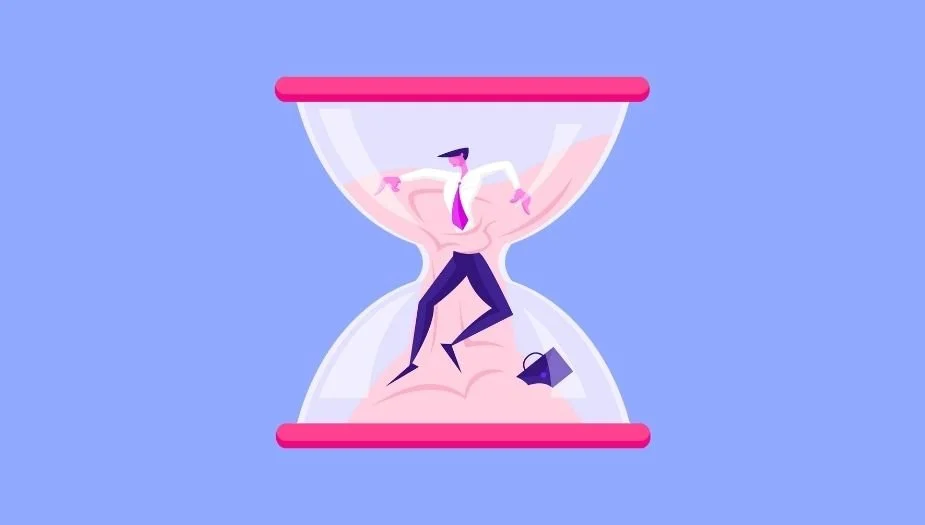Time Blindness: Do You Have Difficulty in Perceiving and Managing Time Effectively?
Why you always think you have more time than you do.
Time is the one resource we can’t make more of, yet most of us act like it’s infinitely flexible. If you’re an overachiever juggling deadlines, meetings, workouts, social obligations, and maybe a desperate attempt at self-care, you’ve likely found yourself saying, This should only take 20 minutes—only to look up an hour later, still not done.
This phenomenon, known as time blindness, is more than just poor time management. It’s a cognitive bias that leads us to consistently underestimate how long tasks take, causing stress, burnout, and a never-ending sense of falling behind. For high-achievers, this is especially problematic: the very ambition that drives success can also drive exhaustion when we continually overload our schedules with unrealistic expectations.
What Is Time Blindness and Why Does It Happen?
Time blindness isn’t just about optimism—it’s a hardwired cognitive limitation. Psychologists have long studied the planning fallacy, a concept introduced by Daniel Kahneman and Amos Tversky, which explains why we chronically underestimate task duration. The culprit? Our brains prioritize best-case scenarios, ignoring past experiences of delays, interruptions, and complexity.
For overachievers, this is exacerbated by a perfectionist streak and an insatiable drive to maximize productivity. The result? A calendar packed with tasks that should fit—if only the world operated in a vacuum, without Wi-Fi issues, last-minute requests, or, you know, human limitations.
Time Blindness vs. the Planning Fallacy: What’s the Difference?
Though time blindness and the planning fallacy are closely related, they are not the same. The planning fallacy specifically refers to our tendency to underestimate how long a task will take, even when we have prior experience with similar tasks taking longer. It’s a cognitive bias that affects how we plan for future work.
Time blindness, on the other hand, is a broader issue related to difficulty in perceiving and managing time effectively. It can manifest as an inability to gauge how much time has passed, how long something will take, or how to allocate time appropriately throughout the day. While the planning fallacy is about flawed predictions, time blindness can also include challenges with tracking and staying aware of time in the moment.
For high achievers, both biases can work together to create an overpacked schedule with unrealistic expectations. Understanding the distinction can help in addressing the right problem—whether it’s improving time estimation skills (to combat the planning fallacy) or implementing tools to stay aware of time throughout the day (to counter time blindness).
Why Overachievers Keep Underestimating Task Time
Overachievers operate under a dangerous illusion: that they can bend time with sheer willpower. And to be fair, many do accomplish more than the average person. But here’s the kicker—doing more doesn’t mean doing it efficiently or sustainably.
Here’s how time blindness manifests in high performers:
Overloading the calendar. If there’s a 30-minute gap, it gets filled. No buffer, no margin for error.
Ignoring transition time. Finishing a meeting at 10:00 AM and expecting to be deep into another task by 10:01? Unrealistic.
Underestimating fatigue. Brainpower isn’t endless. Stacking intense cognitive tasks back-to-back drains energy faster than expected.
Misjudging complexity. What seemed like a quick email spirals into an hour-long drafting session (and 14 tabs of research).
Sound familiar? If so, keep reading—because the solution isn’t just better scheduling.
The Real Cost of Time Blindness: Stress, Burnout, and Missed Opportunities
Consistently underestimating how long tasks take has more fallout than just missing a deadline. It creates a ripple effect across professional and personal life:
Chronic stress and burnout. An overloaded schedule leaves no room to breathe, let alone rest.
Eroding credibility. Consistently missing deadlines, even self-imposed ones, damages trust and professional reputation.
Decision fatigue. The brain can only handle so many adjustments before mental exhaustion sets in.
Diminished quality of work. Rushing to stay on track means cutting corners and producing less thoughtful work.
Neglected personal life. When work constantly bleeds into evenings and weekends, relationships, hobbies, and sleep take a hit.
So, what can be done? Let’s move beyond theory and get practical.
How to Beat Time Blindness and Get More Done (Without Losing Your Sanity)
Apply the ‘50% Rule’
However long you think something will take, add 50%.
A 30-minute task? Budget 45 minutes. It’s not pessimistic—it’s realistic.
Schedule buffer time
If a meeting ends at 2:00 PM, block out 15-30 minutes before jumping into the next big task. Transitions take longer than we admit.
Track your time for a week
Use a time-tracking app or a simple journal to log how long tasks actually take.
Compare this with your estimates to see the gap in perception vs. reality.
Prioritize impact over volume
Being busy isn’t the same as being effective.
Focus on the 20% of tasks that drive 80% of results (hello, Pareto Principle).
Embrace the ‘Good Enough’ Principle
Perfectionism is a time sink. Learn to identify when a task is done rather than perfect.
Use ‘time blocking’—but flexibly
Block out work periods, but don’t pack them so tightly that one delay wrecks your entire day.
Respect your energy levels
Schedule deep work when you’re mentally sharp and lighter tasks when your brain is running on fumes.
Say ‘no’ more often
Overcommitting is the gateway to time blindness. Ruthlessly protect your calendar from unnecessary obligations.
Final Thoughts: Master Your Time Without Burning Out
If you’re an overachiever, your greatest strength—your drive—can also be your biggest time trap. By acknowledging time blindness and actively adjusting for it, you won’t just be more productive—you’ll be strategically productive, without sacrificing sanity.
The goal isn’t to do more. It’s to do what matters, in a way that’s sustainable. Because let’s be real—if you keep treating time like it’s endless, burnout will eventually remind you that it’s not.
So, next time you estimate how long something will take, pause. Then, add more time. Future You will thank you.
Need Help? If everything feels urgent, it’s time to step back.
Real wellness includes rest, reflection, and room to breathe.
💡 Let’s restructure your days with space, not just structure. Book your free 20-minute consult today.
Article References
The sources cited in the article:
Psychology Today (PT). “Time Blindness.” PT - Time Blindness
healthline. “What Is Time Blindness?” healthline - What is Time Blindness?
The Decision Lab. "Planning Fallacy." The Decision Lab - Planning Fallacy
Entrepreneur. “What is the Planning Fallacy, and How Can You Avoid It?” Entrepreneur - What is the Planning Fallacy?
Verywell Mind (VM). “Want to Be More Productive? Use Time Blocking.” VM - Want to Be More Productive? Use Time Blocking
Forbes. "Why Highly Productive People Use Time Blocking.” Forbes - Why Highly Productive People Use Time Blocking
Harvard Business Review (HBR) “Align Your Time Management with Your Goals.” HBR - Align Your Time Management with Your Goals






